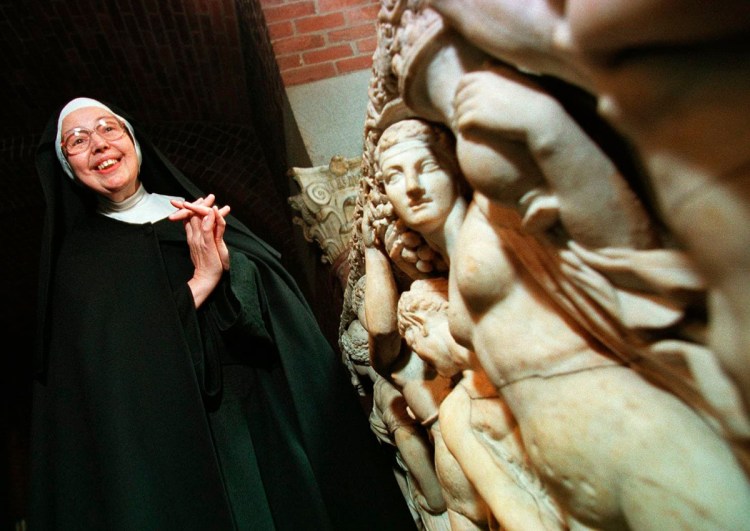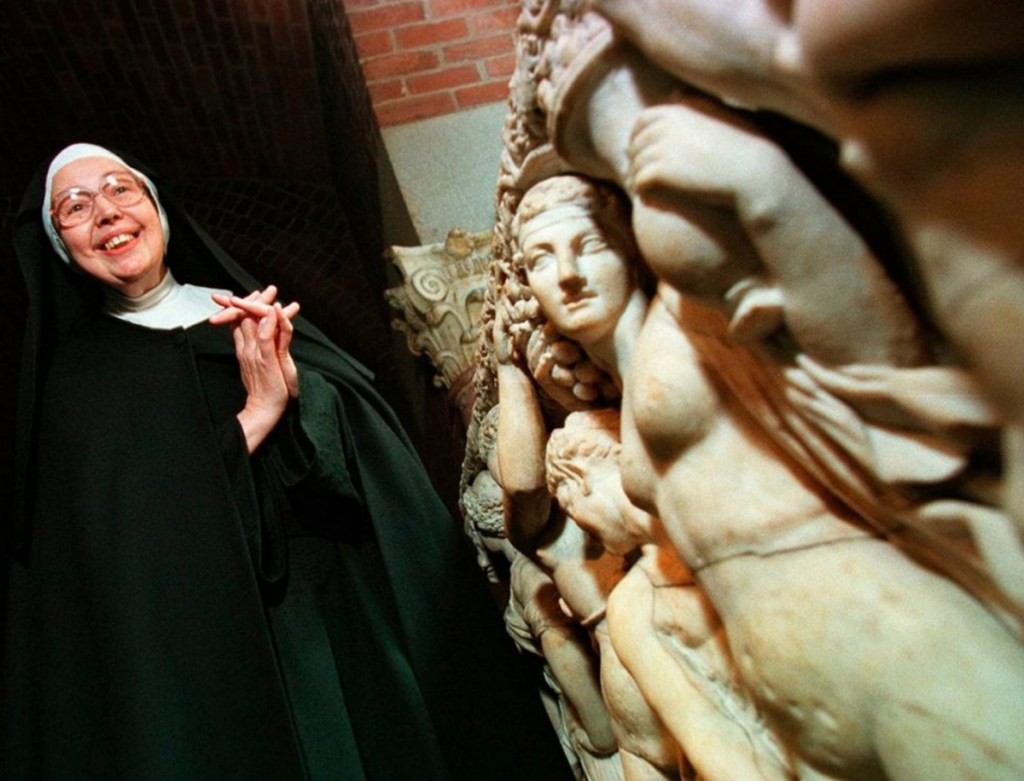Sister Wendy Beckett, a Catholic nun who left her cloistered life in the British countryside to become an unlikely international celebrity by presenting television programs on art history, died Wednesday at a residential care facility near Quidenham, England, where she lived on the grounds of a Carmelite monastery. She was 88.
A spokeswoman for the monastery confirmed the death. Sister Wendy had a history of heart ailments and strokes.
Sister Wendy retreated to a life of seclusion in 1970, officially designated a consecrated virgin by the Catholic Church. She lived alone in a trailer, spending seven hours a day in prayer and translating Latin religious tracts.
After receiving permission from the church, Sister Wendy began to study art history, primarily through books and reproductions on postcards. She began to write for magazines and in 1988 published the first of more than 30 books, “Contemporary Women Artists.”
In 1991, she appeared in a BBC documentary about the National Gallery in London, discussing the paintings of Rembrandt.
Although she was on-screen for only four minutes, viewers were transfixed by the bucktoothed nun in full religious habit and oversized glasses, speaking with wit, warmth – and a slight speech impediment – about one of the greatest artists in history. She soon became the host of her own BBC show, “Sister Wendy’s Odyssey,” a series of 10-minute segments in which she described various works of art.
At the beginning, Sister Wendy was shown emerging from her book-filled trailer, as if making her first forays into the wider world of art – which, in large measure, was true.
She proved to be charming and at ease in front of the camera. Always speaking without a script, she became known to her producers as “one-take Wendy.”
With her expressive face and hands, she described art with a mixture of glee, ecstasy and wonder.
“I force myself to look at it, take it in and tell you in words what I have seen, which is not an easy thing to do because it means going deep into your reactions,” she told the New York Times in 1997. “I can’t do anything without the work of art being there to draw it out.”
For her second series, “Sister Wendy’s Grand Tour” (1994), she made her first trip to continental Europe, visiting museums in Paris, Rome, Amsterdam, Madrid, Florence and Berlin.
Sister Wendy became a media sensation, and her two series were the most successful arts programs on British television since Kenneth Clark’s “Civilisation” in the late 1960s.
Many viewers found her programs inspiring, but some were shocked by Sister Wendy’s enthusiastic appreciation of the carnal nature of many artworks, including her oft-repeated description of a nude couple: “I love all those glistening strands of his hair, and her pubic hair is so soft and fluffy.”
She answered the objections with a stern rebuke based on her reading of Scripture.
“I’m absolutely astonished and bewildered to find people commenting on my delight in a naked body,” she told The Washington Post in 1997. “Never, ever, has anyone suggested that parts of the body were not quite right, that God made a mistake, that they should be passed over. It’s appropriate to comment on everything in the painting.”
In 1994, Sister Wendy published “The Story of Painting,” a coffee-table book examining more than 200 paintings throughout history. It formed the basis of her most ambitious TV series, “Sister Wendy’s Story of Painting,” which appeared on the BBC in 1996 and on PBS stations in the United States a year later.
For the 10-part series, she visited 12 countries and traveled more than 30,000 miles to chronicle painting from prehistoric times to Picasso.
She brought a distinctly 20th century interpretation to the work of 14th century painter Giotto – “my dear, dear Giotto” – whose paintings led the way to the Renaissance.
“Think of how dark it was outside without him, as if everyone was listening to the radio,” she said. “And suddenly he comes forward and it is, yes, like the coming of television. Suddenly people have this great color. This television.”
Copy the Story LinkSend questions/comments to the editors.




Success. Please wait for the page to reload. If the page does not reload within 5 seconds, please refresh the page.
Enter your email and password to access comments.
Hi, to comment on stories you must . This profile is in addition to your subscription and website login.
Already have a commenting profile? .
Invalid username/password.
Please check your email to confirm and complete your registration.
Only subscribers are eligible to post comments. Please subscribe or login first for digital access. Here’s why.
Use the form below to reset your password. When you've submitted your account email, we will send an email with a reset code.